Marissa Herrman
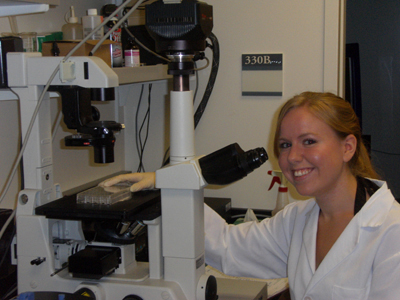
Since their discovery in 1993, microRNAs (miRNAs) have become an area of active research and are currently believed to rival transcriptional regulation as a means of controlling messenger RNA levels and ultimately protein production within a cell. In response to viral infection, the cellular miRNA profile shifts to regulate specific protein levels and combat infection. Cellular miRNA mir-7 has been shown to be significantly upregulated following infection with Cytomegalovirus, a beta-herpes virus present in up to 80% of the population. However the messenger RNA target and effects on protein levels […]
Sandra Anderson
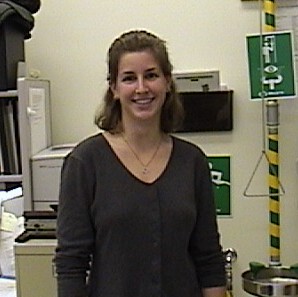
Sandra’s project addresses the synthesis and characterization of imprinted heterogeneous catalysts with local organization at the active site, consisting of hybrid organic-inorganic sol gel materials. One of the challenges facing mankind is the cost effective production of chemicals with less waste to meet the societal needs of an ever-growing population. This requires new heterogeneous catalysts, the most predominant type of catalyst utilized in industry, which are able to conduct chemical reactions with both high activity and selectivity. Biological catalysts, enzymes, are excellent paradigms of controlling catalyst activity and selectivity via […]
Morgan Burke

Morgan’s fascination with neurobiology led her to join the laboratory of Prof. Irving Zucker, where she has been studying the neuroendocrine basis of seasonal rhythms. Siberian hamsters, like most mammals, restrict production of offspring to the spring and summer. They do so by measuring day length. Neural and endocrine tissues decode day length by measuring the duration of nocturnal melatonin secretion. Morgan’s study, which will serve as the basis of her senior thesis, will assess whether the dorsomedial hypothalamic nucleus, a brain melatonin target tissue, is a necessary and sufficient […]
Say Tar Goh
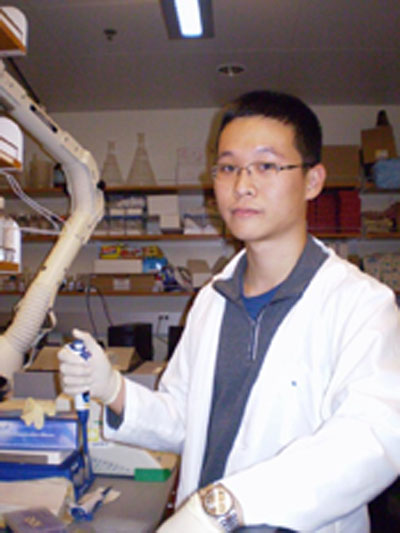
Muscle stem cells, or satellite cells, are located in muscle fibers and are responsible for muscle repair in mammals throughout adult life. As individuals age, the capability of satellite cells to repair muscle dramatically declines. The loss of such capabilities can be related to the host environment, in that extracellular niches provided by old hosts hamper their ability to regenerate muscle, regardless of the origin of the cells themselves. Say Tar hypothesizes that this can, at least in part, be linked to their reduced ability to repair DNA in an […]
Neil Arun Tolani

Neil’s project will contribute to our understanding of the biomechanics of human locomotion. By studying backwards walking using human subjects on a treadmill, he hopes to discover how the inverted pendulum mechanism involved in walking is affected by reversing the direction in which human beings normally move. Through further quantitative analysis, Neil intends to determine which biomechanical factors set the metabolic cost of normal walking. The results of his research will have relevant implications for physical therapists and gait-disabled persons, for whom backwards walking is often used as a rehabilitation […]
Thomas Yuzvinsky

Which way does time flow? Could time really be flowing backwards, and our perception of time passing forward be purely a matter of perspective? Physical phenomena that are asymmetric under time reversal have shown that time must flow forwards, and the discovery of such phenomena in different environments opens the door for new experiments and a better understanding of the nature of the universe. By directly observing the intrinsic angular momentum of a high-quality sample of strontium ruthenate crystals, Tom intends to demonstrate time reversal symmetry breaking (T-violation) in a […]
Margaret Yau

Technology for the elderly should satisfy not only their functional requirements, but also their social and emotional needs. To develop accessible technology for the elderly and enhance their social connections with their remote family members, Margaret, an Electrical Engineering and Computer Science major, will design, implement, and evaluate a tangible instant messaging system, which employs tangible user interfaces (TUIs) in facilitating communications through instant messaging (IM) for the elderly. TUIs involve the use of physically interactive surfaces, the coupling of physical objects and digital information, and ambient media, such as […]
Christopher Jay van Belle
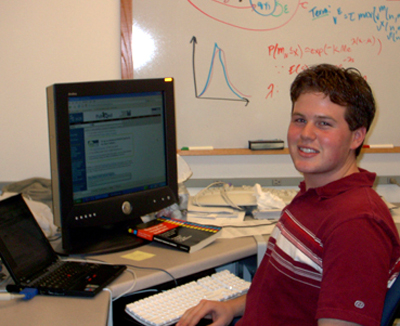
As a part of Steven Brenner’s lab, Chris will be analyzing a large set of novel sequences extracted from oceanic and other environmental microbes. Using computational methods such as Hidden Markov Model searches, he will compare novel environmental peptides to currently known peptides that are available in public databases like Ensembl, TIGR, and nr. Chris will help identify protein domains that are over- or under-represented in the ocean relative to the public datasets, as well as identify domains that may have crossed kingdom barriers. He will also investigate how these […]
Kyle Dunbar
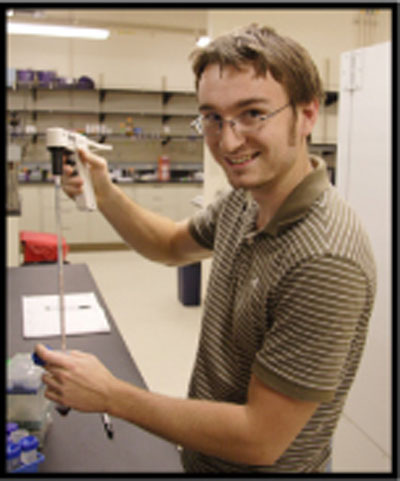
A renewable energy source is becoming a necessity as fossil fuel reserves dwindle. Using microbial fermentation processes, it is possible to harvest plant biomass and convert it into second-generation fuels. Current industrial focus has been placed on ethanol production. However, this compound is not ideally suited for a liquid fuel replacement. A biochemical pathway has been expressed in Escherichia coli that produces 1-butanol, a much more suitable fuel source in terms of both transportation ease and energy density. Experiments have shown that the pathway is active, but there is a […]
Jeri Lynn Parrent
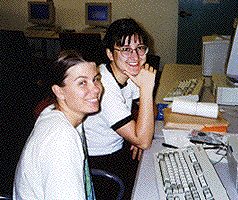
Through a combination of field-work and laboratory research, Jeri’s project promises to make an important contribution to our understanding of-and our efforts to preserve-the planet’s extraordinarily rich biological diversity. This summer, Jeri will travel to Panama to collect samples of Phellinus swieteniae, a fungal pathogen of black mangroves from six spatially isolated mangrove forests located on the Atlantic and Pacific coasts. While in Panama, Jeri will also have the opportunity to visit the Smithsonian Tropical Research Institute (STRI), one of the leading tropical ecology research institutes in the world, and […]